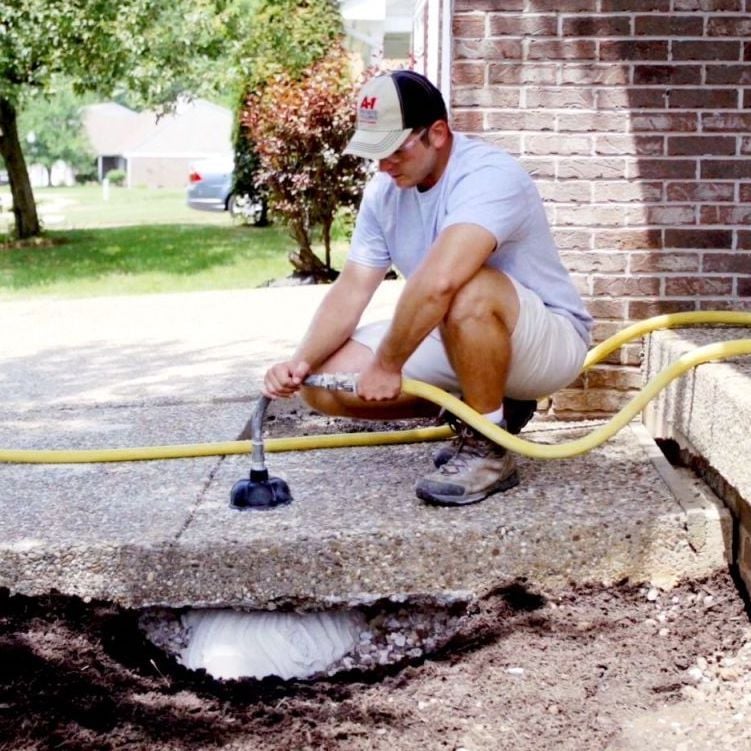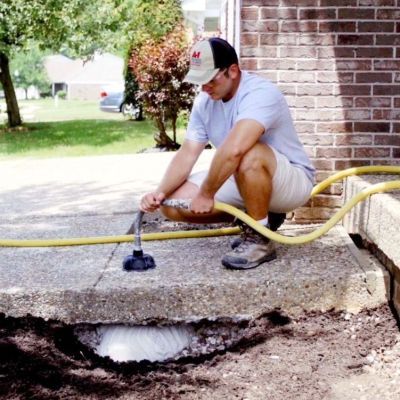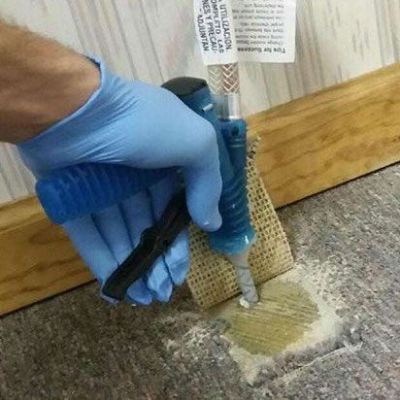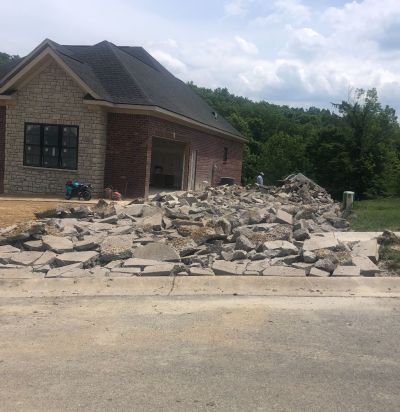3 Mudjacking Alternatives to Revive Your Sinking Concrete
March 24th, 2023 | 3 min. read
By Sarah Etler

Learn about these three alternatives to mudjacking that can help you take back your settled concrete.
Most homeowners face settling concrete at some point in their lifetime. Whether it’s a settling concrete pool deck causing a stressful summer, or an uneven sidewalk making you worry about potential liability, professional concrete leveling services can help lift and level those sinking concrete surfaces.
Here at A-1 Concrete Leveling, we’ve been perfecting the art of lifting concrete for over 30 years, and in this time, we’ve seen how the different methods for achieving level concrete stack up against each other.
Mudjacking is one way to go about achieving even, safe concrete. Mudjacking is a well-known concrete leveling method that uses a mixture of sand, soil, and water to lift sinking and settling concrete slabs back up into a level position.
While mudjacking is an affordable way to eliminate trip hazards and fill voids underneath concrete, it comes with some drawbacks that make it worth reconsidering.
Our goal here at A-1 is to give you as much information about your concrete repair options as possible so that you can make informed decisions for your home. For that reason, we’ve put together this article that will walk you through 3 alternatives to mudjacking to consider for your sunken concrete.
Stone Slurry Grout Leveling
Stone slurry grout leveling and mudjacking are similar concrete leveling methods in that they both require holes to be drilled into affected slabs so that a leveling compound can be pumped below the surface of the concrete to lift it back into a level position, but the similarities stop there.

Stone slurry grout leveling gets its name from the pulverized limestone and water mixture that dries underneath the slab to create a new sturdy base layer. This leveling compound provides a durable repair that can last for the life of the original concrete itself.
Unlike mudjacking, stone slurry grout leveling uses lower pressure to lift a settled concrete slab gradually. This allows concrete leveling technicians to have more control over the repair and better fill any voids that may be under the slab.
Stone slurry grout leveling also uses smaller drill holes when compared to mudjacking. However, while this is true, stone slurry grout leveling usually requires more holes to be drilled for more precision due to the lower pressure of the repair.
Related Resource: The Pros & Cons of Stone Slurry Grout Leveling
Polyurethane Foam Leveling
Polyurethane foam concrete leveling also works by drilling holes into settled concrete slabs and pumping a compound beneath them in order to lift them up, but instead of mud or stone, the process uses liquid foam.
When the liquid foam is injected below the surface of the settled concrete, it undergoes a chemical reaction that makes it expand. The pressure from the expansion causes the concrete to lift, then the foam hardens, creating a new solid base for the concrete to rest on.

Polyurethane foam concrete leveling uses smaller drill holes and can be less messy than both mudjacking and stone slurry grout leveling. However, if the foam gets on anything it may stain, whereas limestone slurry grout and the mud used in mudjacking can be washed off before it causes staining.
However, when using foam, it’s much harder to control how far the concrete is lifted, and it’s much easier to overdo the repair. Also, it’s harder to fill the entire void under a settled concrete slab with foam, which can lead to problems like cracking in the future.
Because the process uses synthetic chemicals, polyurethane foam leveling is typically the most expensive concrete leveling method when compared with mudjacking and stone slurry grout leveling, which both use natural materials to lift sunken concrete.
Related Resource: The Pros & Cons of Polyurethane Foam Leveling
Replacement
Depending on the goals of your repair, mudjacking or other types of concrete leveling may not be the solution you need. If that’s the case, replacing the concrete entirely may be a better option for you.
If you want to add or change something structural about your concrete, like adding new steps, for example, or you want to start with a clean slate to properly maintain your concrete going forward, replacement is likely a good idea for your concrete.

However, concrete replacement is a big project that can take many weeks to complete, and it comes with a lot of hassle. There are also many things that can go wrong during and after concrete replacement.
On top of that, concrete replacement is very expensive. Concrete leveling can actually save up to 70% off the cost of replacement.
While it’s true that there are many drawbacks to concrete replacement, it is an alternative to mudjacking that’s worth considering if you have specific goals in mind for your concrete and simply eliminating trip hazards and bringing it back to its original position won’t get you there.
Now What?
Now that you have a little more context surrounding mudjacking and its alternatives, you’re one step closer to determining which method you’ll choose to revive your sinking concrete.
Sunken concrete can be concerning, but rest assured that it’s a common occurrence that many homeowners struggle with every day.
Whether it's with mudjacking or another alternative discussed here, choosing an experienced and trustworthy concrete repair company to lift your settled concrete can take the stress away and leave you with safe concrete that you can be proud of.
If you’d like to see what A-1 Concrete Leveling’s services can do for your home, click the link below to request a free onsite consultation and cost estimate!
Want to know more about concrete repair and maintenance? Check out these related resources from A-1’s Concrete Academy:
Sarah Etler joined A-1 Concrete Leveling after receiving her Bachelor of Arts degree in English from Northern Kentucky University. As A-1's Content Marketing Manager, she works closely with industry experts to produce content that will best answer questions related to concrete repair and maintenance practices. Sarah loves living a life full of discovery and is excited every day to see what new things she can learn and share with those around her.
Topics: